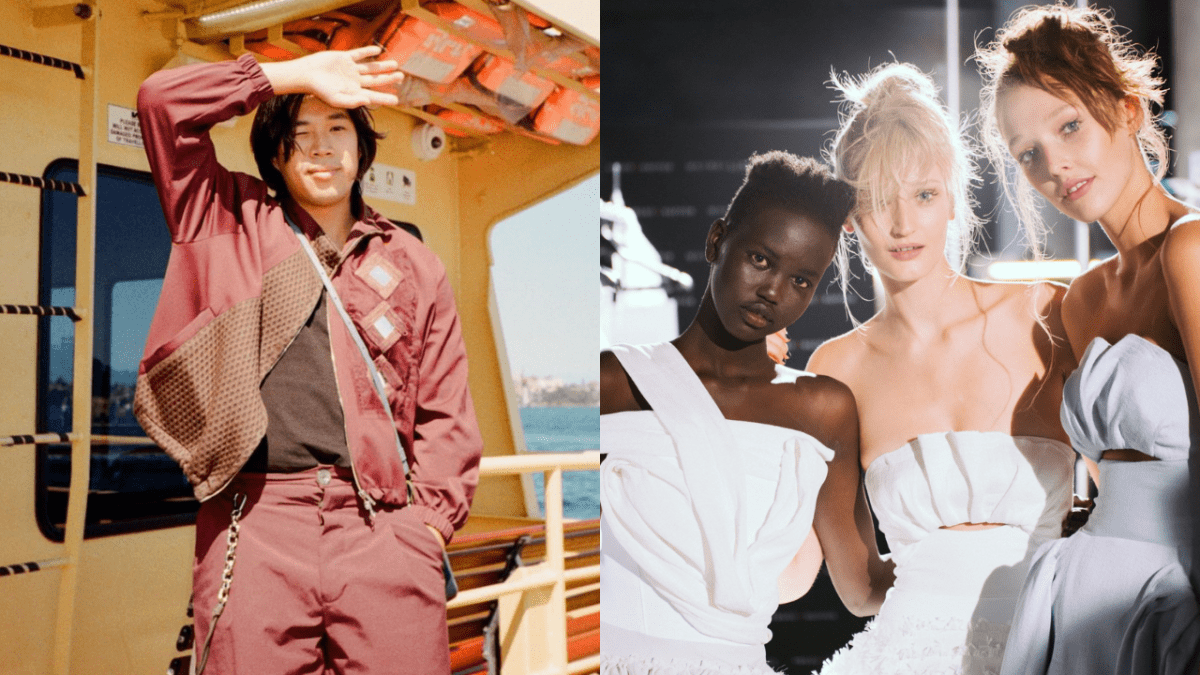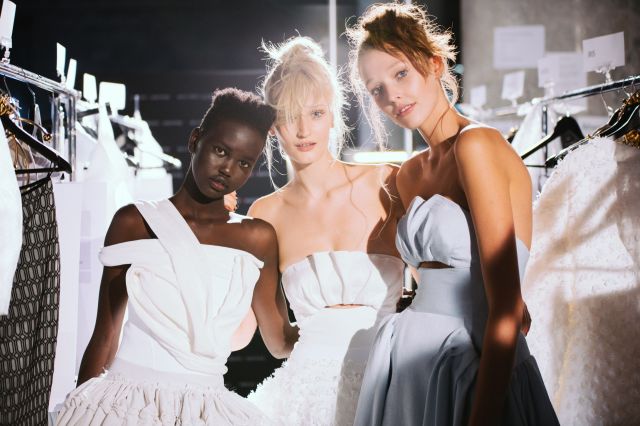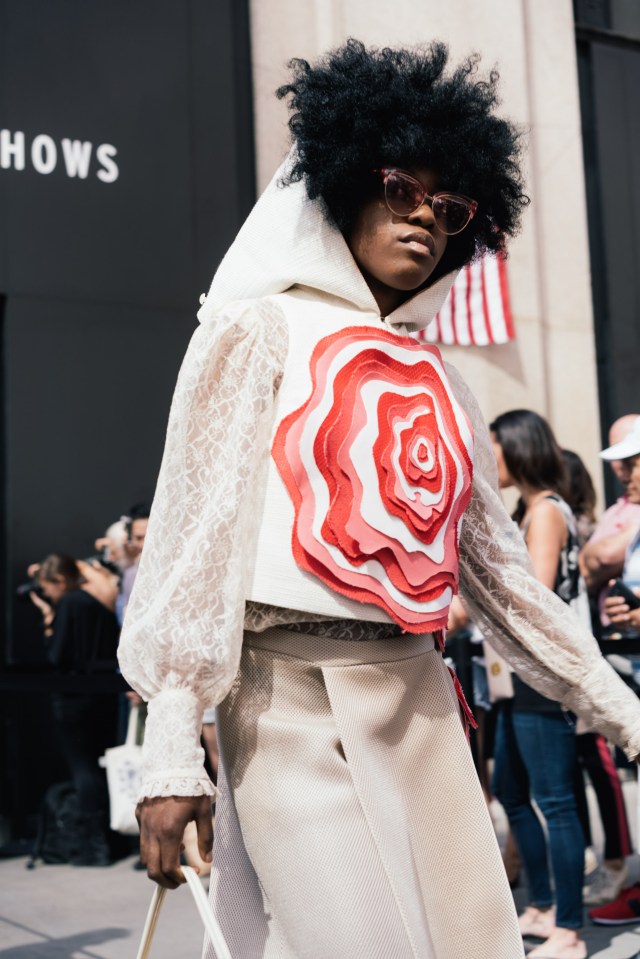

Sometimes we come across people and can’t help but think, ‘How do they do it all?!’ Christopher Quyen is one of them. Based in Sydney, Christopher is a photographer, actor, writer, creative director, producer, filmmaker and the founder of creative agency, Seakyu Creative.
See what I mean?
They’ve worked with the likes of Nike, Gucci, Dior, InStyle Magazine, GQ Australia and L’Officiel Singapore (among many others) but didn’t always believe that this incredibly creative path was for them.
We chatted with Christopher to ask how they’ve managed to chase all of these dreams at such a young age, their advice for working in the creative industries, and what living the dream looks like to them.
PTV: Can you tell us about when you first got into photography and how it has evolved over time?
Christopher: I like to think of my journey into photography in three stages.
The first stage was when I was a child. During school holidays we would often go up to Port Macquarie or the Gold Coast and I would beg my mum to buy me one of those disposable film cameras so I could document my time.
The second stage was in my late teens. My younger sister, Elizabeth, got a Canon 60D for Christmas in 2010 and I would borrow it whenever she wasn’t using it. I also spent the next couple of years learning how to use Photoshop.
Thankfully, my dad eventually got me a camera of my own. After graduating high school, I didn’t know what I wanted to do with my photography so I fell into shooting clubs, gigs, parties, cars, import models, corporate events, weddings, social media content, and portraits of my friends. I was quite directionless, but it was a good training ground for me to develop skills in varying styles.
The third stage was in 2016, when I went to Japan with the intention of travelling around taking photos for a month and a half.
Unfortunately, I made two mistakes. The first mistake was that I only had $1000 in my bank account (that’s a lot of money for a 21-year-old!) and the second mistake was that I bought a non-refundable $600 bag on my first day in Osaka. In all fairness, it was a really nice sustainable bag and I thought 60,000 yen was $60, not $600!
My partner at the time suggested that since I brought my camera, I should take this as an opportunity to do cheap test shoots for models in Japan. I put together a website and spent that month and a half pretty much working in Osaka and Tokyo, contacting models on Instagram and Model Mayhem and offering them cheap test shoots.
One shoot led to another and I even ended up doing some work for Miss Universe Japan.
This was the trip that made me realise that I didn’t need to do all those odd jobs shooting at clubs to make a living as a photographer. That I could be creative and support myself with my vision. I came back to Sydney inspired to chase a career in fashion and portraiture.
In that same year, I shot my first fashion week, got invited to New York Fashion Week, started my own creative content agency, and began building up clients in the fashion and beauty space.

You also work in front of the camera as an actor, how did you get started in that?
Acting never seemed like a reality for me when I was younger. I did perform as a musician and dancer in high school but I was always so in love with cinema and television. Unfortunately, the acting industry at the time just didn’t seem as welcoming for people who looked like me. The power of representation really is just the power of possibility and when you don’t see people who look like you succeeding in the fields that you dream of working in, the possibility gets further away from reality.
I quenched my thirst by doing some short acting courses and even joined an acting agency for extras work throughout university.
I found myself on the sets of movies like Hacksaw Ridge and Pacific Rim and I got a taste of what it was like being a part of a big Hollywood movie. By that time though, I had started working behind the camera and I no longer had any interest in acting and was more interested in how all of the other film departments were working.
Fast forward to 2019, I graduated from university with a Bachelors in Law and Journalism and I was a little lost about what I wanted to do with my life. Timing must have been on my side because shortly after, my agent informed me about an open audition for this SBS mini-series that was looking for a Vietnamese-leading male who is at a crossroads between studying to be an artist or an accountant.
I didn’t have a lot of acting experience, but I just felt like this character was written for me. I’m so grateful and blessed that this was my first acting role with a full Asian cast. The experience filled me with a lot of love for the craft and I’ve learned so much about myself through this profession.
You previously worked as a paralegal in-between creative jobs. Were there any valuable lessons you brought with you from one profession into the other?
Being a paralegal was like this necessary part of my life where I realised that working in an office 9-5 was not for me. I do miss using those parts of my brain though.
Working in the legal field, I learnt a lot about research and time management, but the most valuable lesson I took away from this profession was learning to protect myself legally as a creative freelancer with contracts and terms and conditions. Whenever I take on a job I prefer to have everything done by the book with a contract outlining scope of work, remuneration, usage and all those important things.
However, working in the creative industry, there are some jobs that come in so last minute or require you to be on set the next day which can lead to a lot of miscommunication. So I would recommend all creative freelancers protect themselves even with some terms and conditions on the bottom of their invoices/quotes.
Other than that, I also worked as a gelato scooper which gave me strong wrist muscles so I can hold heavy cameras.

You’ve captured a bunch of different models and musicians. What’s been the most memorable shoot for you?
The most memorable shoot for me has got to be this editorial I shot for L’Officiel Singapore in July 2020, inspired by one of my favourite movies Black Swan. We worked with Carla Martinez with Amelia Lee styling, Jesse Wakenshaw on hair, Cherry Cheung on make-up, and Myles Kalus assisted me with lighting. Looking back, that shoot changed my life.
It was my first editorial in print and my first fashion film with a major publication. I think because we were all in lockdown, a lot of people must have seen it on Instagram because when I started working again it opened up so many opportunities for me to work for dream clients such as Vogue, Harper’s Bazaar, and Gucci.
What does living the dream look like to you?
In terms of my career in fashion, I think I am living my dream. Everything that I wanted at the beginning of this journey in 2016 has come true. Honestly, the last dream that I would want to fulfil is to work on a campaign for a major fashion house or maybe shoot a cover for a magazine. But otherwise, I think I’ve done everything that I wanted and even saying that brings me a lot of peace and gratitude.
In the greater scheme of things, I would love to have a production studio where I am able to fund and bring stories that I am passionate about to the big screen, both mine and others. Then in my free time, I could maybe travel to random places, rent a small apartment, spend three months writing a script or novel with my loved ones, bring it back home to my production studio and work on getting it made.
What are the challenges of being a freelancer?
Support networks are almost non-existent when you’re a creative freelancer. Most of the time you’re depending on advice from your mates or, if you’re fortunate to have one, your talent agent.
When I was starting out, there was a lot of competition between freelancers which meant that a lot of things were kept behind closed doors like rates, hours, or negotiating credits for a job. Because of this, I think it caused a rift in the creative industry where there’s a large amount of freelancers who are getting exploited and a small amount who are getting all the jobs where they’re being compensated fairly. I think this is beginning to shift and more freelancers are being transparent with each other which is better for our industry as it flattens the playing field and we can focus on our vision and talent.
It’s also more difficult to air your grievances if something is bothering you on set as there is no HR department protecting us. This is something that I’ve also experienced working as a freelancer and I urge everyone who is producing a shoot to set a code of conduct and make sure your talent and crew feel safe from discrimination.
On a more personal note, time management and setting expectations and boundaries with clients is so important and it’s something that even I am trying to get better at every day.
What are the best things about freelancing?
Being able to set your own calendar. The older I get the more I feel so grateful that if at any time I feel burnt out, life is getting a bit much, or if I realise I need to spend more time with my loved ones, I can literally clear out a week in my calendar to clear my mind and refocus. I do have to be honest though, sometimes I miss out on some incredible jobs while I’m meant to be taking time off and I get a bit of FOMO. But 2023 is about work-life balance so I’m trying not to feel like that.

If someone was wanting to become a creative multi-hyphenate, what advice would you give to them?
You don’t need to be a master, but you need to know the basics.
There are too many multi-hyphenates who give themselves the title without the foundational skills and (speaking from experience) I think that leads to a lot of conflict later on in your career because the people who are hiring multi-hyphenates often expect a degree of competency over each one of your crafts.
But once you get to that level of competency then the most important thing a multi-hyphenate can have is their taste.
Really ask yourself, ‘What aesthetics do I lean towards? What topics and themes do I like to explore? Basically, what is the creative direction of my art?’ I think it’s important to know what “your world” looks like when you have so many mediums to express yourself in. Because while your skills may not be as good as someone who dedicates their whole life to one thing, your skills will always be the best to create something that fits within “your world.”